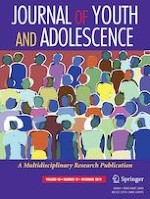12-10-2019 | Empirical Research
LGBTQ Youth-Serving Community-Based Organizations: Who Participates and What Difference Does it Make?
Gepubliceerd in: Journal of Youth and Adolescence | Uitgave 12/2019
Log in om toegang te krijgenAbstract
LGBTQ youth are at greater risk for compromised health, yet large-scale health promotion programs for LGBTQ young people have been slow to develop. LGBTQ community-based organizations—which provide LGBTQ-focused support and services—have existed for decades, but have not been a focus of the LGBTQ youth health literature. The current study used a contemporary sample of LGBTQ youth (age 15–21; M = 18.81; n = 1045) to examine who participates in LGBTQ community-based organizations, and the association between participation and self-reported mental health and substance use. Youth who participated in LGBTQ community-based organizations were more likely to be assigned male at birth, transgender, youth of color, and accessing free-or-reduced lunch. Participation was associated with concurrent and longitudinal reports of mental health and substance use. LGBTQ community-based organizations may be an underutilized resource for promoting LGBTQ youth health.
